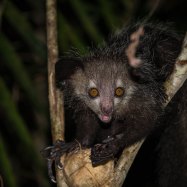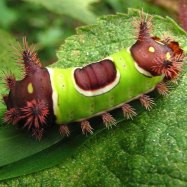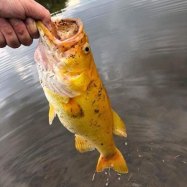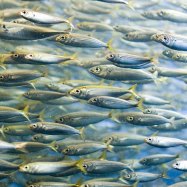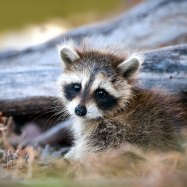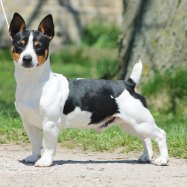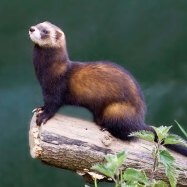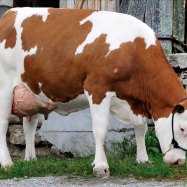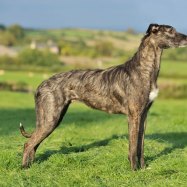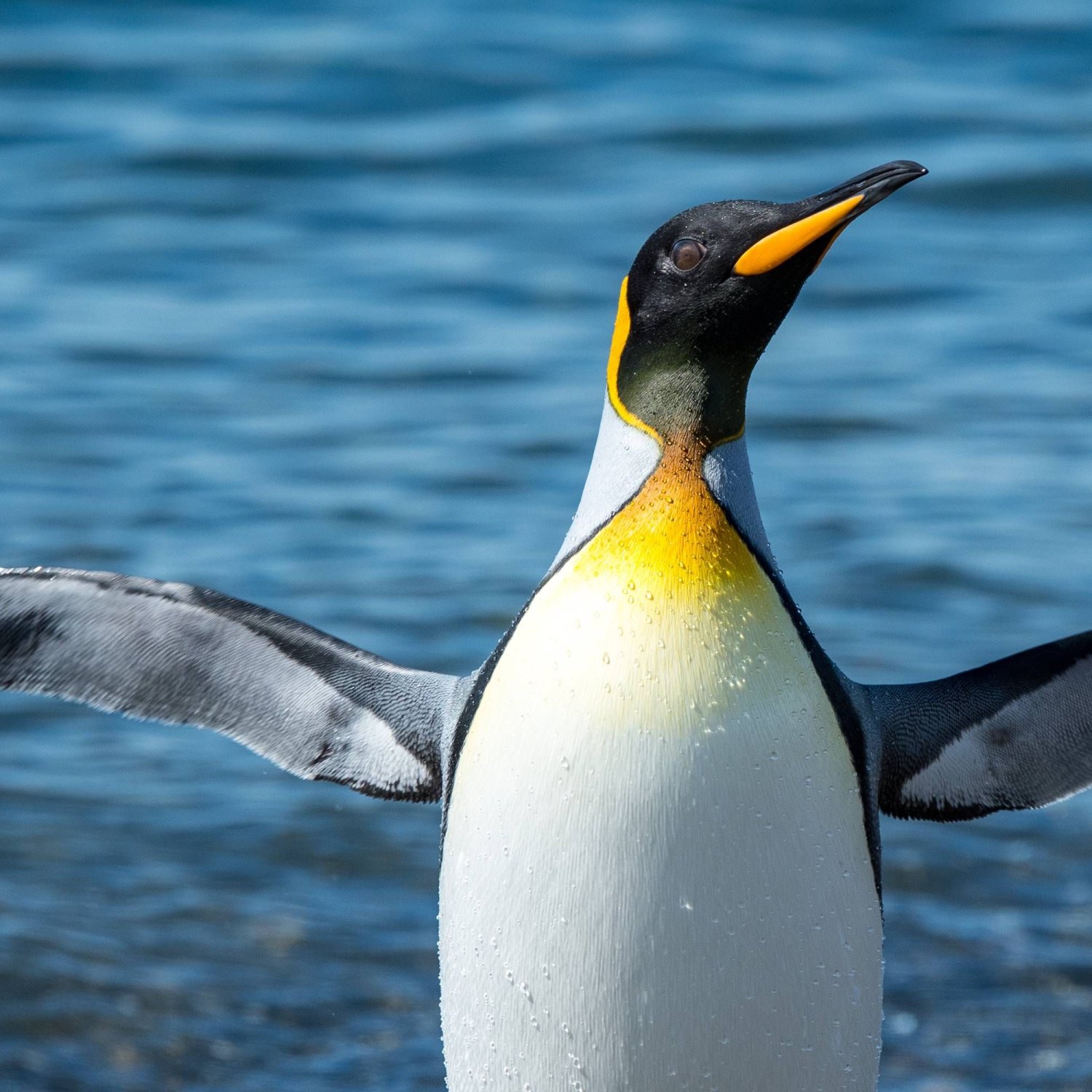
King Penguin
95 to 100 cm
The King Penguin, found in the Southern Hemisphere, is a tall and stocky bird with a length of 95 to 100 cm. They belong to the Aptenodytidae family and are known for their distinctive tuxedo-like appearance. They are excellent swimmers and can dive up to 300 meters deep in the ocean to catch their food. Explore the fascinating world of these magnificent birds and their unique behaviors! #KingPenguin #SouthernHemisphere #Aptenodytidae
Animal Details Summary:
Common Name: King Penguin
Kingdom: Animalia
Habitat: Marine
The King of the Southern Hemisphere: A Closer Look at the Majestic King Penguin
Deep in the southernmost part of our planet, where the sun only shines for half the year and the temperature can drop to -40 degrees Celsius, lives a creature fit for royalty. The King Penguin, scientifically known as Aptenodytes patagonicus, is a magnificent species of bird that has captured the hearts of many with its striking appearance and unique characteristics. Let's take a closer look at the king of the Southern Hemisphere and discover what makes it one of the most fascinating animals on earth.A Royal Family: Classification of King Penguin
The King Penguin belongs to the Animalia kingdom, which includes all living organisms that are multicellular, heterotrophic, and have cells with a nucleus King Penguin. Within this kingdom, it belongs to the phylum Chordata, which includes all animals with a notochord, a hollow dorsal nerve cord, and gill slits at some point in their life cycle. Next is the class Aves, which consists of all birds, and order Sphenisciformes, which includes all penguin species. Lastly, the King Penguin belongs to the Aptenodytidae family, which includes all penguin species that have a brush-like tongue and an oil gland for waterproofing their feathers.Fit for the Sea: Habitat and Distribution
King Penguins, like all penguin species, are marine birds that are adapted for life in the water. They are found in the subantarctic islands, with the majority residing on the islands of South Georgia, the Falklands, and the Kerguelen. These islands are located about 690 to 1,100 miles from Antarctica and are home to millions of King Penguins. Their preference for subantarctic islands can be attributed to the proximity of these islands to the sea, which makes it easier for them to access their food source.Fueled by Meat: Feeding Method
King Penguins are carnivorous, meaning they mainly feed on meat. More specifically, they are piscivorous, which means they feed on fish Kodkod. They have a varied diet, with fish such as myctophid and lanternfish being their main food source. Other prey items include squid, krill, and other small crustaceans. To catch their prey, King Penguins use their streamlined bodies and strong wings to swim and dive deep into the water. They can hold their breath for up to 6 minutes and dive as deep as 100 meters, making them successful hunters in the depths of the ocean.From Argentina to Antarctica: Geographical Distribution and Country of Origin
As mentioned earlier, King Penguins are found in the subantarctic islands, specifically in the Atlantic, Indian, and Pacific Oceans. They are also found on the coasts of Antarctica and New Zealand. The majority of King Penguins, about 80%, reside in the South Georgia Islands, making it the largest colony in the world. While they are found in various countries, the King Penguin's country of origin is Argentina, where it was first discovered in 1769 by the French explorer Yves-Joseph de Kerguelen.The Southern Ruler: Location and Adaptations
Unlike other penguin species that are found in both the Northern and Southern Hemisphere, the King Penguin is exclusively found in the Southern Hemisphere. This is because they have adapted to the harsh conditions of the southernmost part of the world. The King Penguin's thick layer of blubber, black and white feathers, and tightly packed body all aid in keeping them warm in temperatures that can reach -40 degrees Celsius. This insulation is necessary as King Penguins spend most of their time in the water, coming out only to breed and molt.Dual Coloration: The Black and White Appearance of King Penguin
One of the most striking features of the King Penguin is its black and white coloration. The top of its body, including its wings, back, and head, is black, while the underside, including its belly and face, is white. This coloration serves as camouflage, as seen from the top, King Penguins blend in with the dark water, while from the bottom, they blend in with the light sky. This helps them avoid predators such as leopard seals and orcas while swimming in the open ocean.Tall and Stocky: The Body Shape of King Penguin
Another striking feature of the King Penguin is its body shape. Standing at an average height of 95 to 100 cm, they are the second-tallest penguin species, with only the Emperor Penguin surpassing them in height. This tall stature is necessary for diving and swimming, as it allows them to propel themselves in the water with their strong flippers and feet. In addition, King Penguins have a stocky build, with a head and body that appear large in proportion to their wings and feet. This build provides them with more insulation against the cold temperatures of their habitat.The Heavyweights of the Penguin World: Length and Weight of King Penguin
The King Penguin is not only tall and stocky, but it is also one of the heaviest species of penguins. Males and females have a similar average weight range, which is between 11 to 16 kg. However, during the mating season, males can weigh up to 18 kg, as they fast for about 50 days while incubating their egg. In contrast, females lose weight during this period and weigh around 10 kg. This significant difference in weight is one of the few ways to distinguish male and female King Penguins.Life of a King: Behavior and Social Structure
King Penguins are highly social birds and usually gather in large colonies, sometimes numbering in the hundreds of thousands. These colonies are formed during the breeding season, which takes place during the Antarctic summer, from November to April. During this time, King Penguins mate with the same partner every year, and pairs work together to incubate their egg and raise their chick. King Penguins are also known for their noisy calls, especially during the breeding season, where they use distinctive calls to locate their mates and chicks among the large colony.The Future of the King: Conservation Status
While King Penguins may have saturated populations in some regions, they are still considered a species of concern by the International Union for Conservation of Nature (IUCN). This is due to their vulnerability to the effects of climate change, especially in their breeding habitats. As sea ice and ocean temperatures continue to change, it can negatively impact the availability of their prey and the success of their breeding season. However, conservation efforts are in place to protect their breeding grounds and ensure this majestic species continues to thrive in the Southern Hemisphere.Ruling the Sea: The King Penguin's Contribution to the Ecosystem
Aside from being a beloved and fascinating species, King Penguins also play a vital role in their ecosystem. As predators of fish and squid, they help regulate the populations of these species, which in turn maintains a healthy balance within the ocean. Additionally, their droppings, known as guano, are rich in nutrients and are a significant source of food for other organisms on land and in the sea. As such, the King Penguin is not just royalty in the animal kingdom but also an important contributor to the ecosystem.A Regal Species: Conclusion
From its dual coloration and stocky build to its noisy calls and vital role in the ecosystem, the King Penguin truly lives up to its name. This regal species has captured our hearts and continues to awe us with its adaptations and behavior. As we continue to learn more about this species, let us also do our part in preserving their habitat and ensuring their survival for generations to come.

King Penguin
Animal Details King Penguin - Scientific Name: Aptenodytes patagonicus
- Category: Animals K
- Scientific Name: Aptenodytes patagonicus
- Common Name: King Penguin
- Kingdom: Animalia
- Phylum: Chordata
- Class: Aves
- Order: Sphenisciformes
- Family: Aptenodytidae
- Habitat: Marine
- Feeding Method: Carnivorous
- Geographical Distribution: Subantarctic islands
- Country of Origin: Argentina
- Location: Southern Hemisphere
- Animal Coloration: Black and white
- Body Shape: Tall and stocky
- Length: 95 to 100 cm
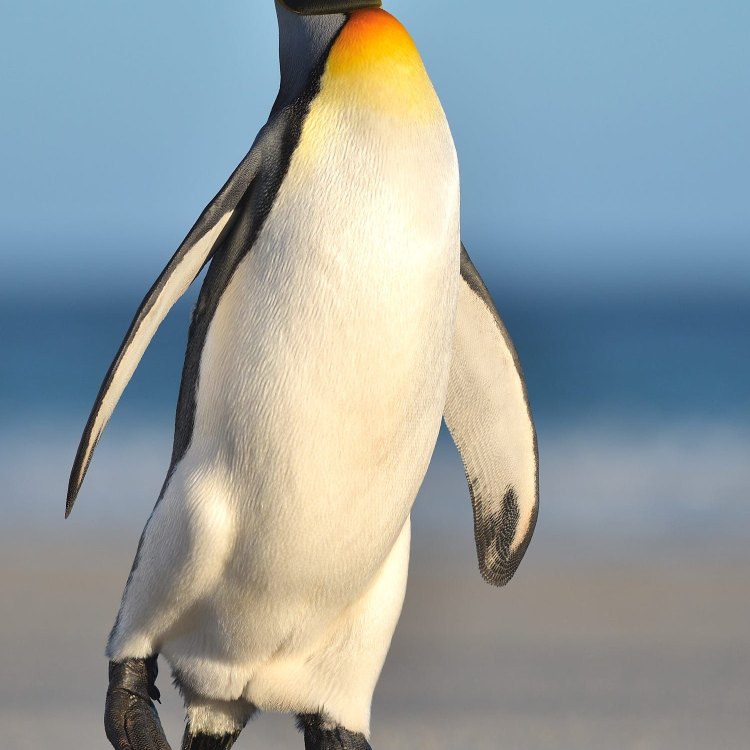
King Penguin
- Adult Size: Large
- Average Lifespan: 25 to 30 years
- Reproduction: Sexual
- Reproductive Behavior: Monogamous
- Sound or Call: Loud braying
- Migration Pattern: Migratory
- Social Groups: Colonial
- Behavior: Social and gregarious
- Threats: Climate change, overfishing, habitat degradation
- Conservation Status: Least Concern
- Impact on Ecosystem: Important top predator
- Human Use: Tourism, scientific research
- Distinctive Features: Bright orange patches on the sides of the head
- Interesting Facts: King penguins are the second largest species of penguin
- Predator: Orcas, leopard seals
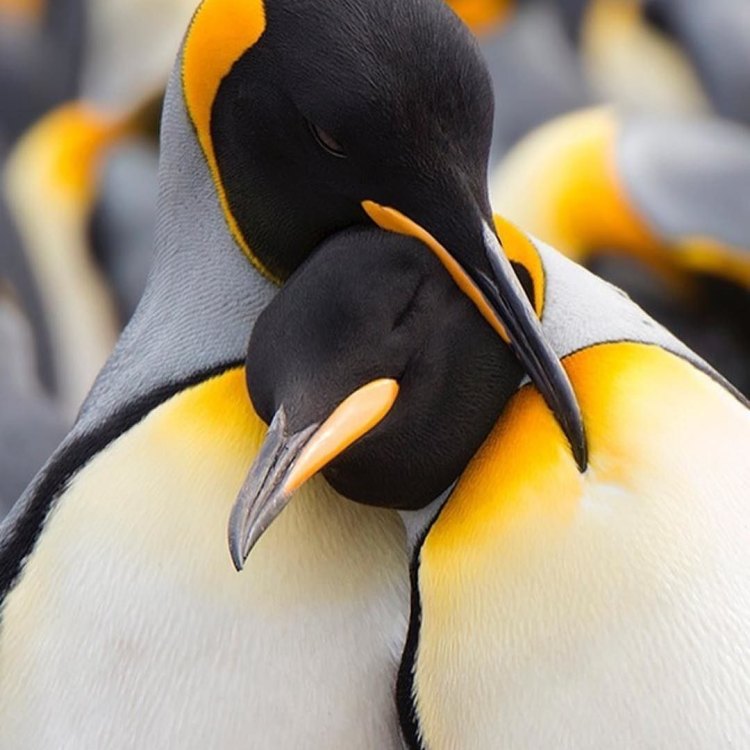
Aptenodytes patagonicus
The Fascinating Life of King Penguins: Monogamous Creatures with Bright Orange Patches
Deep in the southern hemisphere, on the icy and desolate islands of the sub-Antarctic, lives a majestic creature that captures the hearts of all who have the pleasure of seeing it in person. The king penguin (Aptenodytes patagonicus) is a fascinating and unique species of penguin that has captured the attention of scientists and tourists alike.These large, monogamous birds have a distinct appearance and complex behaviors that make them stand out among other penguin species. In this article, we will delve into the life of king penguins, from their physical characteristics to their impact on their ecosystem and their interaction with humans PeaceOfAnimals.Com.
Physical Characteristics
King penguins are impressive birds, with adult sizes ranging from 70 to 100 centimeters (27 to 39 inches) in height and weighing an average of 9 to 18 kilograms (20 to 40 pounds). They have a sleek and streamlined body shape, perfect for navigating through the cold waters of their habitat. Their wings are adapted into flippers, which they use to propel themselves underwater at speeds of up to 9 kilometers (5.6 miles) per hour.
One of the most distinctive features of king penguins is their bright orange patches on the sides of their heads. These patches are made up of feathers that become more vibrant during the breeding season. This unique coloration is important for sexual selection and courtship behavior, as we will explore later in the article.
Unlike many other bird species, both male and female king penguins have similar physical characteristics, making it difficult to differentiate between the two without observing their behavior.
Life Cycle and Reproduction
King penguins have a long lifespan, with an average of 25 to 30 years in the wild Keelback. However, some individuals have been known to live up to 40 years. Like other penguin species, king penguins have a complex life cycle that involves multiple stages.
During the breeding season, which typically begins in November, large colonies of king penguins gather on the sub-Antarctic islands to mate and lay eggs. These colonies can consist of thousands of penguins and are a spectacular sight to behold.
King penguins are monogamous creatures, meaning they have the same mate for life. They engage in elaborate courtship rituals, including vocal calls and displays of their bright orange patches, to attract a mate. Once mated, the pair will take turns incubating their single egg, each for a period of approximately 50 days.
Once the chick is hatched, both parents will share the responsibility of feeding and caring for it. The chick is covered in soft, grayish-brown feathers and is completely dependent on its parents for the first year of its life. During this time, it will go through several stages of molting and develop its waterproof adult feathers.
Behavior and Social Dynamics
King penguins are social and gregarious creatures that form large colonies, sometimes consisting of up to 400,000 individuals. These colonies are essential for the survival of the species, as they provide protection from predators and help to maintain their body temperatures in the cold Antarctic climate.
Their social behavior is also important for the successful rearing of their young. King penguin parents use a unique call to locate their chick in the large colonies, and researchers have found that chicks can recognize their parents' calls from hundreds of meters away.
During the breeding season, the colonies are divided into two groups: one responsible for incubating the eggs, and the other for rearing the chicks. As the chicks grow, they form "crèches," where they huddle together to stay warm and protected while their parents are out fishing.
Threats and Conservation Status
Despite their strong social behavior and large populations, king penguins are facing several threats to their survival. Climate change is a major concern, as it leads to the loss of sea ice, which is crucial for their breeding and foraging behaviors. The decrease in sea ice also affects the availability of their main food source, small fish and krill, as they rely on the ice as a platform for hunting.
Overfishing is another significant threat to king penguins, as it reduces the availability of their food. Additionally, habitat degradation, particularly from oil spills and pollution, can have severe consequences for these birds.
Despite these threats, the International Union for Conservation of Nature (IUCN) has categorized king penguins as "Least Concern" on the conservation status scale. However, the IUCN also notes that their population is decreasing rapidly, and they may face more significant risks in the future.
Impact on Ecosystem
King penguins play a crucial role in their ecosystem as top predators in their food chain. They help to regulate the populations of their prey, such as small fish and krill, which in turn affects the entire food web. They also contribute to nutrient cycling on their breeding islands through their guano, providing important nutrients for plant growth.
Human Interaction and Use
The charismatic and unique nature of king penguins has made them popular subjects for tourism and scientific research. Many sub-Antarctic islands, such as South Georgia and the Falkland Islands, offer opportunities for tourists to observe king penguins in their natural habitat.
Scientists also study king penguins to understand their behaviors and how they are adapting to the changing climate. By monitoring their populations and behaviors, researchers can gain valuable insights into the health of the Antarctic ecosystem.
Predators and Survival Tactics
Despite their large size and impressive social behavior, king penguins have several predators in their harsh environment. Orcas and leopard seals are the two main predators of king penguins, preying on adults and chicks at the breeding colonies.
King penguins have developed some unique survival tactics to protect themselves from these predators. They have thick layers of blubber and dense feathers to help keep them warm and act as a defense against the icy waters and harsh winds. They also use their large colonies and the help of their neighbors to protect against predators, with groups of penguins joining together to fend off attacks.
Interesting Facts
As we have discovered, king penguins are full of interesting and unique features, but here are a few surprising facts about them that you may not know:
- King penguins are the second-largest species of penguin, with only the emperor penguin being larger.
- They are the most northerly breeding species of penguin, with colonies located on sub-Antarctic islands as far north as 46 degrees latitude.
- Male and female king penguins have an equal role in raising their chicks, taking turns to incubate and forage up to 10 kilometers (6.2 miles) away from the colony.
- King penguins can dive to depths of over 100 meters (328 feet) and hold their breath for up to 5 minutes as they hunt for prey underwater.
In Conclusion
The king penguin is a magnificent and fascinating species, with unique physical characteristics, complex life cycle, and social behaviors that make it a standout in the animal kingdom. Sadly, this remarkable species is facing threats from climate change, overfishing, and habitat degradation, making it even more important to study and protect them.
As we continue to learn and understand more about this species, it is crucial that we also take action to protect their habitats and ensure their survival for future generations to appreciate and admire. Whether through tourism, scientific research, or simply spreading awareness, we can all play a role in protecting these majestic creatures and the delicate ecosystem they call home.
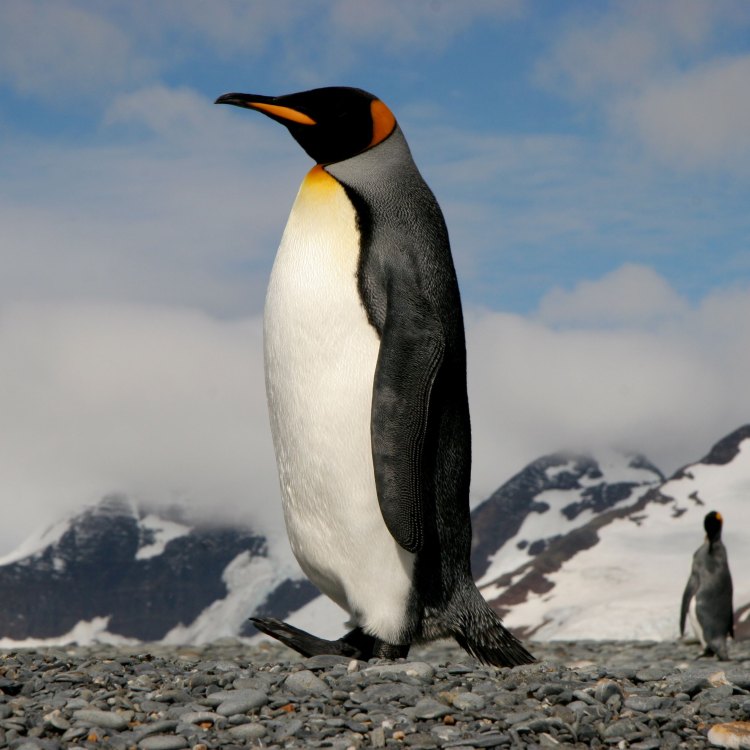
The King of the Southern Hemisphere: A Closer Look at the Majestic King Penguin
Disclaimer: The content provided is for informational purposes only. We cannot guarantee the accuracy of the information on this page 100%. All information provided here may change without prior notice.

